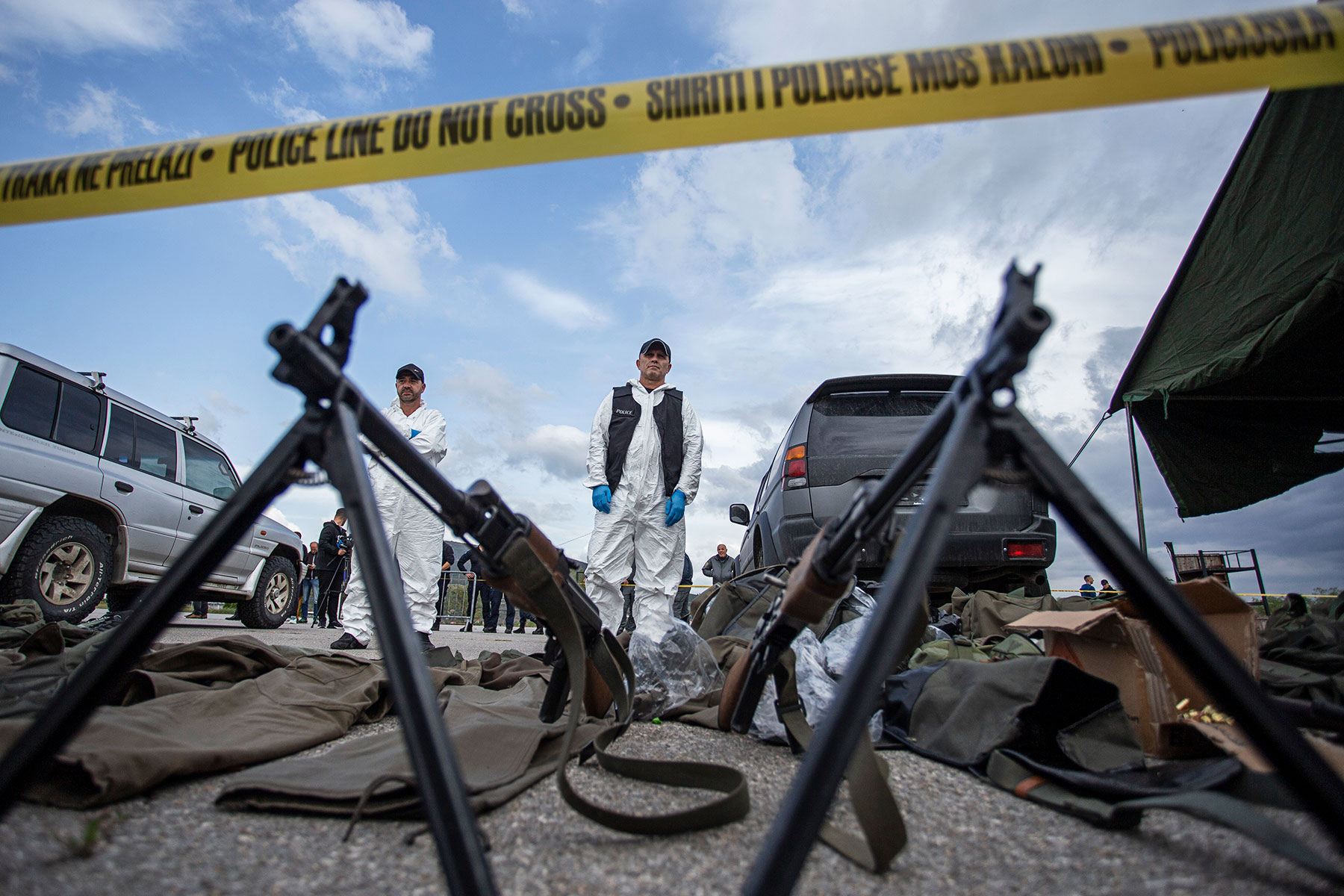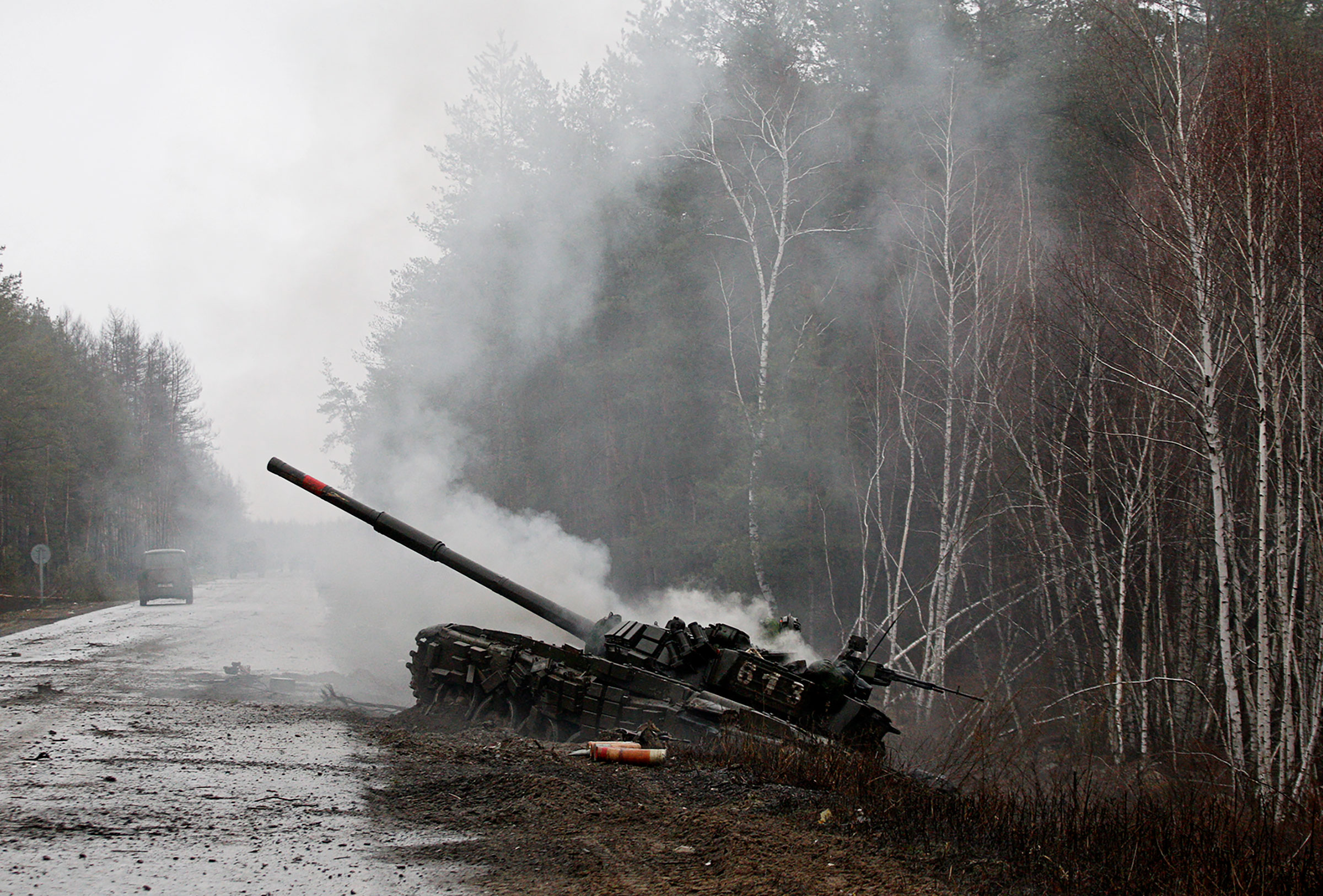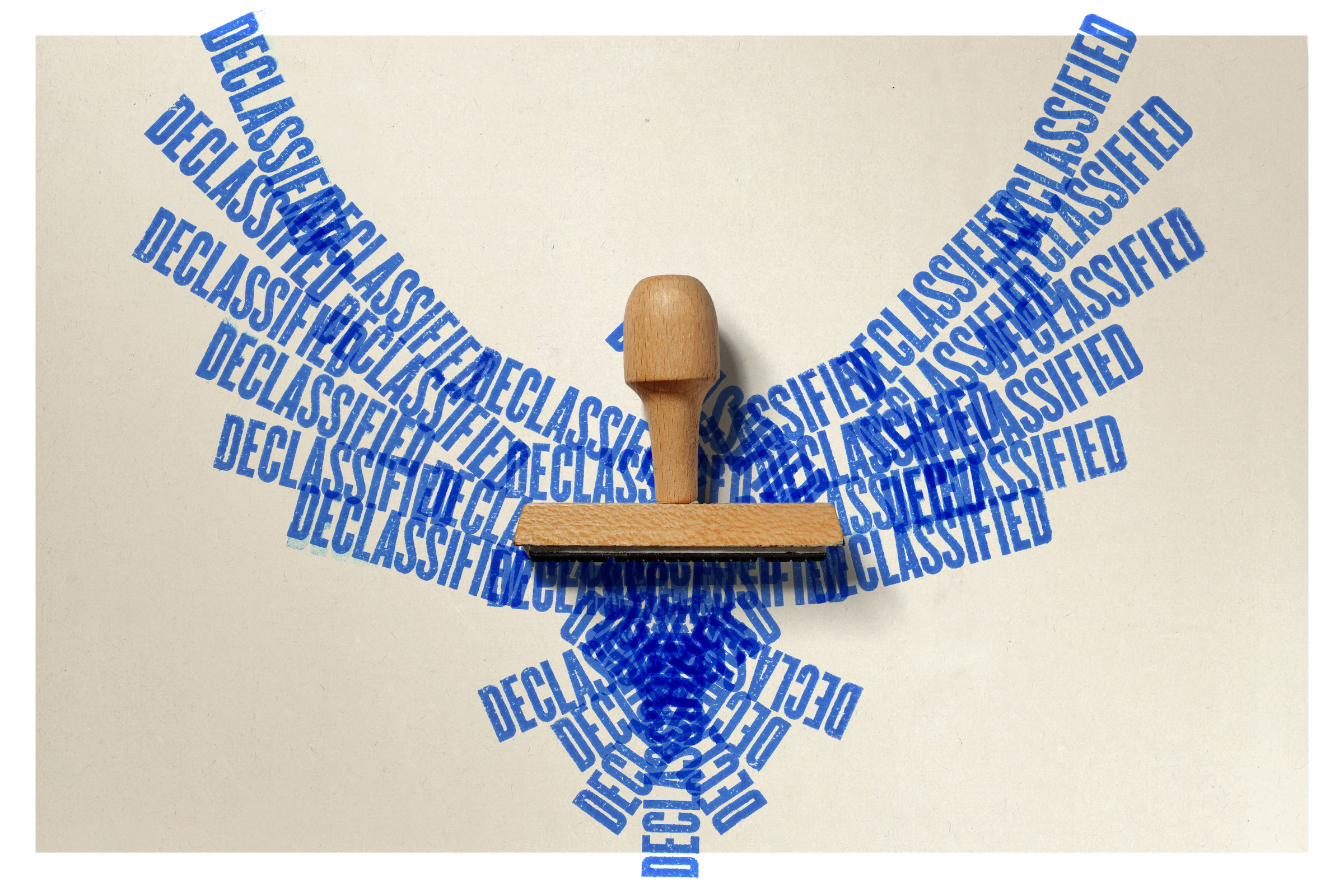On the afternoon of Sept. 27, a Balkans expert at the White House got a disturbing call from a U.S. intelligence agency. Serbian forces were massing along the length of their country’s border with Kosovo, where NATO has kept an uneasy peace since a bloody war of secession in 1999. Three days earlier, more than two dozen armed Serbs had killed a Kosovar police officer in an attack. Now Serbia was deploying heavy weapons and troops. “We were very worried that Serbia could be preparing to launch a military invasion,” says one National Security Council (NSC) official.
The question was what to do about it. Months of mounting tensions in a remote corner of southeastern Europe had not received much attention in the media. Diplomatic efforts by the U.K., Italy, and other countries with troops on the ground in Kosovo had failed to calm the situation. In Washington, attention was focused on chaos in Congress; in much of Europe, the top priority was marshaling continued support for Ukraine. So as part of an effort to pressure Serbia to back down, U.S. National Security Adviser Jake Sullivan approved a request from his Europe team to declassify elements of the Serbian buildup for public release.
The NSC Intelligence Directorate edited the secret details of the buildup to obscure the sources and methods behind the intelligence. Then it shipped the request to the office of the Director of National Intelligence (ODNI) in Northern Virginia via classified email. On Sept. 29, after a two-day scramble to clear the declassification, NSC spokesperson John Kirby convened an unscheduled Zoom call with members of the White House press corps. Kirby gave new information about the Sept. 24 attack on the Kosovar police officer and broke the news of the latest Serbian deployment, revealing that it included advanced artillery, tanks, and mechanized infantry units. As coverage spiked, European countries joined the U.S. in applying new diplomatic pressure on the Serbs, and the U.K. announced an additional troop deployment to Kosovo. Within days, Serbian troops were pulling back.

The declassification and release of the Serbian troop movements is one example of a novel White House approach to using intelligence that has grown out of the U.S. response to the war in Ukraine. Starting in the fall of 2021, as U.S. spies became convinced Russia was preparing to invade, Sullivan worked with Director of National Intelligence Avril Haines and CIA Director William Burns to “downgrade” classified details of Moscow’s moves. “We were sitting on this troubling information,” says Maher Bitar, NSC coordinator for intelligence and defense policy, “and we needed to get ahead of what the Russians were going to do.”
More than two years later, the White House has built a broad program to share secrets when it serves strategic goals. About once a week, White House officials see intelligence that they want to make public and get approval from Sullivan to try, more than a dozen current and former White House and national-security officials tell TIME. Intelligence officials at the NSC send requests to the ODNI, which processes them, agreeing on cleared language with those who created the secrets to begin with. “The ultimate decision on whether to green-light or red-light a given piece of information rests with the professionals in the intelligence community,” Sullivan says.
Read More: China’s Ambitions, Russia’s Nukes and TikTok: Spy Chiefs Talk Biggest U.S. Security Threats
The motivation behind the program, the officials say, is that it works. Strategic declassification has denied Russian President Vladimir Putin “false narratives,” Burns said in a speech last summer, “putting him in the uncomfortable and unaccustomed position of being on his back foot.” The effort has expanded beyond Russia. The U.S. has declassified intelligence to blunt Chinese saber-rattling in the Taiwan Strait, to pressure Iran to stop supplying weapons to the Houthis attacking shipping vessels in the Red Sea, and to counter Hamas’ false claims about Israeli strikes. “This is a game changer,” says Kirby. “I hope they never put it back in the bottle.”

The U.S. has selectively declassified and leaked intelligence for as long as it has collected it, but the Biden Administration’s secret-sharing program is new in several ways, current and former intelligence officials say. Where once the ODNI received one or two downgrade requests a month, it now sometimes receives many more than that in a day. While other agencies have jumped into the declassification game, much of the work is driven out of the White House. Rather than leaking one-off intelligence scoops, NSC officials combine multiple secrets with open-source intelligence from commercial-satellite imagery, battlefield bloggers, and news reports, distributing packages that echo the finished intelligence reports they receive every morning. “It’s been done piecemeal over the years,” says former CIA spokesman Bill Harlow. “It’s more strategic and orchestrated this time.”
Not everyone thinks that’s a good thing. Skeptics point to the U.S. government’s history of cherry-picking intelligence to deceive foreigners, and Americans, during the Cold War and to justify the 2003 invasion of Iraq. Members of the U.S. intel community, ever protective of their secrets, want to limit the program to the conflict in Ukraine. Some in both parties worry a White House–run propaganda effort could be used for personal or political advantage. “Now we’ve got this declassification weapon that, put in the wrong hands, is very dangerous,” says a former CIA official.
Read More: As Russia’s Full-Scale Invasion Enters Its Third Year, Optimism for Ukraine Sinks
But the world of secrets is changing, and America is scrambling to adapt. Russia has refined its social media propaganda operation so aggressively since 2016 that it believes only 1% of its bot army is detected on platforms like X and TikTok, according to a U.S. intelligence document published last year by the Washington Post. China is using advanced AI in its propaganda operations, the Rand Corp. said in a recent report. Sharing America’s secrets with the world before enemies try to influence and undermine democracies, advocates say, is one of the best ways to fight back. “We’ve learned you can beat a lie to the punch if you know it’s coming,” says Kirby. “We’re getting out ahead of them.”
At the same time, the proliferation of classified information means that America’s secrets are worth less than they used to be—and are harder to keep. The U.S. intelligence community sucks up the equivalent of 29 petabytes or 500 billion pages worth of information every day, classifies tens of millions of documents a year, and produces an estimated 50,000 classified reports annually, according to the National Security Agency, the National Archives, and public reporting. Accused mass leakers Edward Snowden and Airman First Class Jack Teixeira were both IT workers hired to manage that ocean of intel. Presidents Joe Biden and Donald Trump have faced special-counsel investigations for their sloppy handling of classified information. America’s attempt to safely warehouse billions of secrets is failing from the top of the intel chain to the bottom. As Justice Potter Stewart said in the Pentagon Papers case, “When everything is classified, then nothing is classified, and the system becomes one to be disregarded by the cynical or the careless, and to be manipulated by those intent on self-protection or self-promotion.”
The result is a toxic mix of public skepticism and diminished security. The share of Americans who believe the intelligence community respects their privacy and civil liberties dropped from 52% in 2020 to 44% in 2022, according to a University of Texas survey. After revelations of abuse by the FBI, Congress is struggling to renew the controversial Section 702 mass-surveillance program that the government says is crucial to fighting everything from fentanyl trafficking to terrorism to Chinese spies.
Read More: How the Surveillance of Immigrants Remade American Policing
In its declassification program, the White House thinks it has the start of an answer to all three problems: disinformation, overclassification, and public distrust. “That’s a pretty good 1, 2, 3 from my perspective,” Sullivan tells TIME. He adds, “Obviously, this approach will have to evolve over time as we learn more.” The story of how the Biden Administration developed its secret-sharing program, and the search for how to use it safely, shows how far the U.S. government still has to go.

The first target of the American secret sharers’ efforts was Vladimir Putin. In mid
-October 2021, senior national-security leaders briefed the President, Sullivan, and other White House officials that Russia was preparing to invade Ukraine. Sullivan’s first reaction was surprise. The second was to come up with a way to deter it. Biden decided to send Burns, a seasoned diplomat and former ambassador to Russia, to confront Putin. “We wanted to demonstrate to the Russians that we were aware of their planning to launch an invasion of Ukraine in order to disabuse them of the idea that they could have the element of surprise,” says Eric Green, then the senior director for Russia and Central Asia at the NSC. “But we also wanted to make sure what Bill Burns said was not burning sources and methods.” The result was a “downgrade,” or partial declassification, of the briefing Sullivan and the senior U.S. officials had received, Green recalls.
Burns ended up confronting Putin remotely in early November, reaching him by phone in the resort town of Sochi from the Moscow office of the Russian President’s foreign policy adviser. The U.S. spy chief left Russia feeling he had made no progress. The next step was to try to unite America’s allies behind the effort to deter an invasion. On the way back from Russia, the U.S. team briefed E.U. and NATO partners with a more detailed presentation of the intelligence. The Europeans were skeptical. “The French and the Germans and others were like, ‘You guys always overreact to these things. Russia’s got too much to lose,’” says a senior U.S. intelligence official. After hearing the European doubts, Haines recalled in a 2023 interview with Politico, Biden said, “OK, you need to get out there. We need to start sharing intelligence.”
Read More: How Tech Giants Turned Ukraine Into an AI War Lab
At the head of the effort were Sullivan and his deputy at the NSC, Jon Finer. Former journalists, they appreciate more than some the value of being first. “There was a sense that by doing it pro-actively we would have more influence over the narrative,” says Green, who also saw a moral component to the decision: “This was such a monumental possibility that we had a duty to inform the public.” And, Green adds, “If we kept it under wraps, and then it came out that we knew, that would be an untenable situation.”
The group decided to declassify evidence that Russian troops were massing near Ukraine’s borders. They found commercial-satellite photos that showed the same troop buildups they had seen on the U.S. spy platforms. They combined those images with some of the details from the briefing that had surprised them, as well as with news reports and other public information, and worked with the intelligence community to produce a declassified version. They then gave the package to Shane Harris, a veteran Washington Post intelligence reporter. On Dec. 3, the Post ran the story. Other news outlets jumped to cover the troop buildup. Though the Russians denied they were preparing for war, the public conversation about the possibility of an invasion shifted. By the NSC’s lights, the move was a success.

They decided to do more. In January, U.S. intelligence saw mounting preparations for a false-flag operation that Moscow intended to use as a justification for an invasion. Russia was preparing to stage an attack in separatist eastern Ukraine, complete with film of fake victims, the intelligence community reported. After issuing a general warning, the NSC prepared a more detailed package and got it cleared for release. On Feb. 3, then White House press secretary Jen Psaki and then State Department spokesperson Ned Price briefed reporters on the plot.
Not everyone was convinced. “What evidence do you have to support the idea that there is some propaganda film in the making?” asked Matt Lee, the State Department correspondent at AP. Price, sticking to his talking points, repeated the allegation without providing further evidence. The exchange went viral and highlighted the challenges to the approach. Declassification would only work, the NSC concluded, if it had enough credibility to overcome the U.S. history of bad intelligence and propaganda abuse.
As it turned out, the Russians ran the false-flag play anyway. On Feb. 18, an explosion rocked the pro-Russia-separatist region of Donetsk, and local leaders there called on Moscow to intervene militarily. But against the backdrop of the White House briefings, the Russian pretext provided no diplomatic cover. By some accounts, the pre-bunking delayed the Russian invasion. “We know it bought at least a week,” Kirby says.
But it didn’t prevent it. Russian tanks rolled across Ukraine’s borders in late February 2022, grabbing swaths of territory in the east of the country and coming within miles of the presidential palace in Kyiv. Back in Washington, the secret sharers expanded their efforts.

The Office of the Director of National Intelligence is headquartered in a suburban complex in northern Virginia known as Liberty Crossing. Two large steel-and-glass buildings in the shapes of an L and an X are hidden up a drive behind an embankment, a stand of trees, and security checkpoints. Since 2008, the complex has housed the intelligence community’s umbrella organization, created after 9/11 to manage the 18 sometimes competing, often territorial, agencies that collect and analyze America’s secrets.
In the two-story lobby of the L-shaped building, rows of security turnstiles and low-ceilinged elevator banks lead up to the office that handles information management for the intelligence community. It is not large: fewer than 10 officials are assigned to the job. The declassification requests they fielded in the run-up to the Russian invasion started out as emails over the classified network, primarily from Biden, Sullivan, and the White House, and grew to include petitions from other agencies and departments. ODNI declined to say how many of the downgrade requests are for nonpublic or covert purposes, and how many are for full declassification and official public release.
To help deal with the spiking number of requests, the NSC organized its process. Proposed downgrades had to meet certain strategic objectives. In the case of Ukraine, says Kirby, those were to support Kyiv’s success on the battlefield, bolster NATO, and avoid drawing the U.S. directly into the war. The requested intelligence had to be based on high-confidence assessments, not the low- or medium-ones that had proved false in Iraq. Sullivan approves these requests about two-thirds of the time, according to Kirby and other White House officials.
Not everyone was eager to help. Intelligence officers who had classified secrets to begin with were loath to declassify them, officials on all sides of the process say. But in Haines, Sullivan had an ally. A lawyer and physicist who once owned an indie bookstore in Baltimore and had a hobby of rebuilding everything from TVs to twin-engine planes, she rose to be deputy head of the CIA in 2013. “Having a system that can facilitate such sharing,” she said in January 2023, “and ultimately having the resources to review and downgrade, or declassify what can be released, is critical.”
Read More: How a New Bipartisan Task Force Is Thinking About Artificial Intelligence
Over time, the ODNI created a system to speed response and create records both of the request to declassify the intelligence and of its authorization. The template includes the date of the request, the deadline, who’s asking for the downgrade, who’s going to use it, what the cleared language would be, where the intelligence came from, and the justification for declassification. Usually such requests take weeks to process. Now the speed depends in part on how sensitive the intelligence is, says one official involved in the process.
In some cases, approval went all the way up to Burns or the heads of other intelligence agencies. The biggest concern was protecting sources and methods. The White House learned not to ask for the declassification of full, finished reports, instead targeting individual facts, or maps and graphics. “Strategic downgrades had to mean strategic, it just couldn’t be every tactical piece of intelligence we came across,” says Sullivan. Over time, those involved say, program runners in the intelligence community saw how their sanitized information was used publicly, and bought in.
That meant more and more declassification. From March 2022 on, the U.S. released intelligence about potential Chinese support for Russia, Russian attacks against Ukrainian storage facilities, Russia’s naval blockade in the Black Sea, and Iranian and North Korean support for the war. The secrets were combined with publicly available information, according to senior White House officials, including naval maritime data, commercial-satellite imagery, and social media activity.
Along the way, the NSC team began expanding the use of declassified material. Ahead of then House Speaker Nancy Pelosi’s visit to Taiwan in August 2022, Kirby briefed a declassified intelligence-community analysis of the steps China might take in response, including military provocations like firing missiles in the Taiwan Strait. The goal was to diminish the shock value of any retaliation by Beijing for Pelosi’s trip, a senior White House official says.

The U.S. has also used declassification in the Israel-Hamas War. The White House twice downgraded intelligence about what they said was Hamas’ use of al-Shifa Hospital in Gaza as a military command center “to help explain to people how [Hamas fighters] have deeply embedded themselves within the civilian population,” says an NSC official familiar with the decision. In late December, the White House released downgraded intelligence claiming Iran had transferred drones and cruise missiles to Houthi militants in Yemen that were being used to attack ships in the Red Sea.
Read More: Human Rights Watch Accuses Israel of Blocking Aid to Gaza
Even the program’s most enthusiastic backers admit the results are mixed. Finer, Sullivan’s deputy, told an intelligence conference in July that the U.S. had used it to successfully deter Russian arms deals with China and Iran, and to build support for war-crimes charges at the Hague. Yet months of downgrades intended to forestall arms transfers from North Korea to Russia failed, as have attempts to pressure Iran to cut off military support for the Houthis.
In late January 2023, Kirby received a letter via courier that was postmarked st. petersburg. Having grown up in St. Petersburg, Fla., he thought the letter might have something to do with the home he still owns there. But on closer examination, he discovered it had come not from the southeastern U.S. but from northwestern Russia. Inside the envelope was a typed note. “Dear Mr Kirby, Could you please clarify what crime was committed by PMC Wagner?” It was hand-signed: “Yevgeny Prigozhin.”
The moment was something of a milestone in the U.S.-Russia propaganda battle: a direct exchange between adversaries in the information space. Prigozhin was the head of the Wagner Group, which ran a key mercenary force on the ground in Ukraine. Just days before receiving Prigozhin’s letter, Kirby had announced at a White House press briefing that the U.S. was designating Wagner as a transnational criminal organization and imposing sanctions on the group.
Read More: Inside the Little-Known U.S. Arms Control Center in Daily Contact With Russia
Before leading the mercenary group, one of Prigozhin’s claims to fame was as a global disinformation operator. In 2016, he organized the main Russian troll farms that infiltrated U.S. social media during the presidential election, part of a campaign that pushed propaganda to 126 million people on Facebook, according to the company. The Justice Department indicted Prigozhin for his role in the scheme. Prigozhin’s personalized response to Wagner’s criminal designation bolstered the White House’s sense that declassification had given the U.S. a new weapon in the running battle against Russia’s propagandists. “It showed we were getting inside his head,” says Kirby.
In other ways, the episode highlights how far behind the U.S. has fallen in the propaganda wars. Since 2016, Moscow has expanded and refined its efforts to control the “information environment” through automated propaganda. In late 2022, Russia’s “Main Scientific Research Computing Center” was improving its network of hundreds of thousands of social media bots to the point that they were detected on X, YouTube and TikTok less than 1% of the time, according to a top-secret document leaked by Teixeira.
To hear America’s information warriors tell it, the danger is only growing. Autocracies like Iran, North Korea, and China have gotten in the game. China’s leader, Xi Jinping, has called for expanded use of technology in controlling international public opinion, and the Chinese military has researched the use of generative AI and large language models to automate propaganda at scale, according to a Rand study released in September. The result, write the researchers, may be “a massive bot network that looks and acts human.”
Read More: Tech Companies Are Taking Action on AI Election Misinformation. Will It Matter?
No one knows how effective this AI-enhanced propaganda may be. “I don’t think it’s changing a lot of people’s minds, it’s just reinforcing what people already think,” says James Steinberg, former Deputy National Security Adviser and dean of the Johns Hopkins School of Advanced International Studies. Others are more alarmed. “As AI’s role in defining and shaping the ‘information space’ grows,” wrote former Google CEO Eric Schmidt, former National Security Adviser Henry Kissinger, and MIT dean Daniel Huttenlocher in a recent book, “the prospects for free society, even free will, may be altered.”
For students of government intelligence abuse, the true danger is in overreacting. While Sullivan, Burns, and Haines tout the power of declassification in the fight against autocratic disinformation, others worry about a coordinated secret-exploiting operation at the White House. “We don’t want to chill declassification,” says Mark Zaid, a lawyer who specializes in national-security cases, “but the politicization or weaponization of intelligence is worse than at any point in our lifetime.”

History supports such concerns. In the Cold War, the U.S. used declassified intelligence to mislead adversaries and Americans alike, including when officials asserted that Russian forces knew they were shooting at a civilian aircraft when they downed Korean Air Lines Flight 007 in 1983. In the early 2000s, the U.S. declassified what turned out to be bogus intelligence about Saddam Hussein’s weapons-of-mass-destruction program to justify the invasion of Iraq. Most recently, U.S. counter-intelligence operatives at the FBI gave credence to an unreliable dossier collected on Trump, then briefed him on it, paving the way for its publication.
Trump has his own ideas about the uses of declassification. He started his term by allegedly revealing secrets—reportedly collected by Israeli intelligence services—to two Russian officials, for reasons that never became clear. In 2019, he tweeted high-resolution photos, reportedly taken by a multibillion-dollar KH-11 spy satellite, showing a damaged Iranian missile site. Accused of taking secrets to his Mar-a-Lago resort in Florida, Trump falsely claimed he could declassify documents just by thinking them unsecret.
What has gotten both Trump and Biden in the most trouble, however, isn’t misuse of declassification, but failing to safeguard the secrets to which they have access. Special counsel Robert Hur concluded Biden willfully took secret papers to his home in Wilmington and to offices elsewhere in Delaware and in Pennsylvania. Hur declined to bring charges. The FBI found secret documents strewn around Mar-a-Lago, and special counsel Jack Smith has charged Trump with blocking government attempts to get them back.
Experts say such breaches are as much a product of America’s industrial creation of secrets as they are carelessness in handling them. No one knows how many secrets America creates a year: the number grew from more than 5 million in 2006 to more than 95 million in 2012, and eventually the government just stopped counting. Former Defense Department officials estimate that anywhere from 50% to 90% of them shouldn’t be classified at all. The cheapening of American secrets has grown so extreme that the organizers of a popular online video game, War Thunder, which crowd-sources scenarios between real-world militaries, have repeatedly warned participants to stop trying to make the game more accurate by sharing classified details about the weapons systems it features.
Could the White House’s willingness to declassify intelligence for strategic purposes help with overclassification? Advocates say it’s harder for agencies to justify keeping secrets from the 1950s when today’s spies are being more flexible with theirs. In theory, AI could be used to compare the billions of government secrets with what is publicly available. The Public Intelligence Declassification Board, an office of the National Archives tasked with fighting overclassification, argued for using new tech in a 2020 report, and Haines has endorsed some of its ideas.
Read More: How Data Literacy Can Keep America Safe
There will always be secrets of such great value or delicate provenance that they must be protected. “While the amount of publicly available information has essentially exploded, that doesn’t mean the age of big secrets is over,” Haines tells TIME. But mass collection and social media have changed the economy of secrecy. Once, classified intelligence that gave decision-makers an advantage over their opponents was so hard to come by that it was genuinely precious for national security. Now, intelligence that once took months to collect and process can make it around the world in minutes. “Open source” groups like Bellingcat have shown the value of posting facts online to contradict an autocrat’s false narrative before it can take root. To extract value from at least some of its billions of secrets, argue proponents of declassification, the U.S. government needs to make them public.
That might also help with what has become a crisis of public trust in the intelligence community. In a 2019 report, Justice Department Inspector General Michael Horowitz found the FBI abused the process of applying for warrants to spy on Americans 17 times as it went after former Trump campaign official Carter Page. As recently as 2021, the FBI performed more than 3 million searches on data collected on Americans, including those involved in the Jan. 6 riot and Black Lives Matter protests, without warrants, according to an ODNI report. It’s perhaps not surprising that some Americans give credence to conspiracy theories, from Trump’s fulminations about a sinister “deep state” to presidential candidate Robert F. Kennedy Jr.’s claims that the CIA killed his uncle.
Read More: How Housewives Played a Critical Role in the CIA
Sullivan believes that responsible declassification can help reverse this crisis of trust. “Being able to look the American people in the eye and say, ‘We’re tracking this threat, we’re taking it seriously, we’re doing something about it,’” he says, “creates trust with a sense that one’s government is on top of the problem.” Some intelligence experts propose doing more to ensure transparency and oversight, like empowering bipartisan committees on Capitol Hill, enacting tougher protections for whistle-blowers, and imposing rules at ODNI and Executive Orders from the White House on what gets declassified and how it is downgraded.
But ultimately, the broad authority to declassify secrets rests with the President. Which means the Commander in Chief’s credibility is central to any attempt to use secret-sharing as a tool to fight disinformation and rebuild public trust. “What sets us apart is the way we do it, and what we’re doing it for,” says the NSC’s Bitar. Or, as the CBS News correspondent turned government broadcaster Edward R. Murrow told Congress in 1963: “Truth is the best propaganda.”
—With reporting by Leslie Dickstein and Simmone Shah/New York and Lissa August/Washington
More Must-Reads From TIME
- The 100 Most Influential People of 2024
- How Far Trump Would Go
- Why Maternity Care Is Underpaid
- Scenes From Pro-Palestinian Encampments Across U.S. Universities
- Saving Seconds Is Better Than Hours
- Why Your Breakfast Should Start with a Vegetable
- Welcome to the Golden Age of Ryan Gosling
- Want Weekly Recs on What to Watch, Read, and More? Sign Up for Worth Your Time
Contact us at letters@time.com
